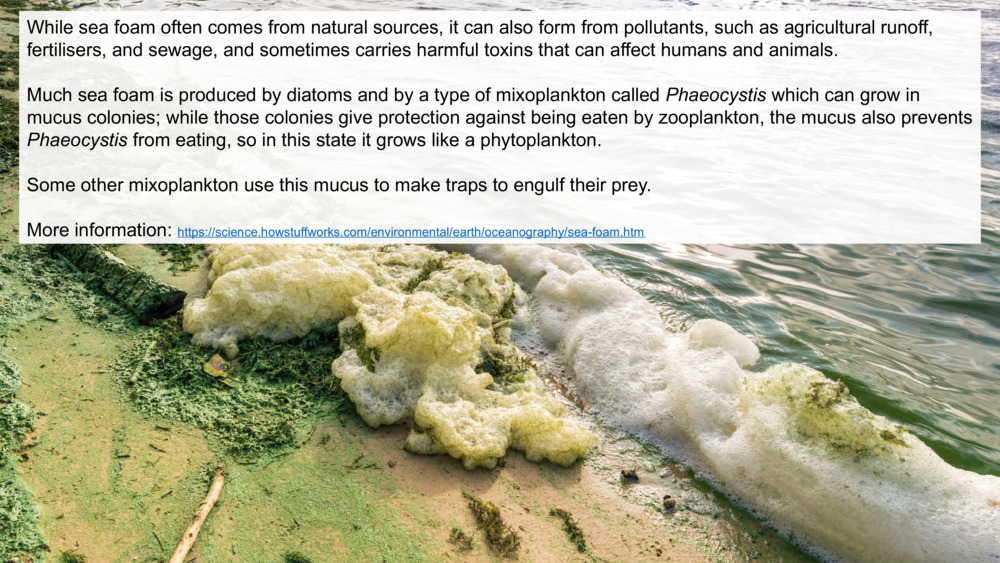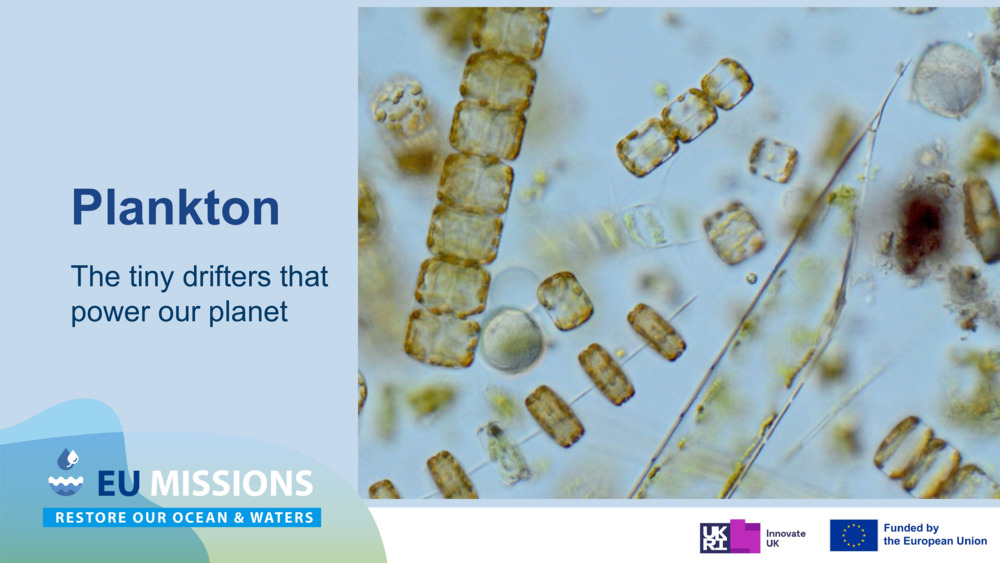While sea foam often comes from natural sources, it can also form from pollutants, such as agricultural runoff, fertilisers, and sewage, and sometimes carries harmful toxins that can affect humans and animals.
While sea foam often comes from natural sources, it can also form from pollutants, such as agricultural runoff, fertilisers, and sewage, and sometimes carries harmful toxins that can affect humans and animals.
While sea foam often comes from natural sources, it can also form from pollutants, such as agricultural runoff, fertilisers, and sewage, and sometimes carries harmful toxins that can affect humans and animals. Much sea foam is produced by diatoms and by a type of mixoplankton called Phaeocystis which can grow in mucus colonies; while those colonies give protection against being eaten by zooplankton, the mucus also prevents Phaeocystis from eating, so in this state it grows like a phytoplankton. Some other mixoplankton use this mucus to make traps to engulf their prey. More information: https://science.howstuffworks.com/environmental/earth/oceanography/sea-foam.htm

Original Slide Deck: Plankton: The tiny drifters that power the ocean
Topics: Biodiversity. Ocean Currents. Deoxygenation. Ocean Chemistry. Ocean. Climate. Sustainable Resources. Ecosystem Services.
Suitable Ages: 11. 12. 13. 14. 15. 16.
Keywords: Algae. Aquatic Animals. Bacteria. Biodiversity. Biology. Carbon. Carbon Cycle. Carbon Dioxide. Changing Environment. Climate. Climate Change. Conservation. Contamination. Ecosystem. Environment. Eutrophication. Fertilisers. Food Chain. Habitats. Harmful Algal Blooms (Hab). Hypoxia. Mixoplankton. Nutrient Cycle. Nutrients. Oceans. Organisms. Photosynthesis. Phytoplankton. Pollution. Protozooplankton. Sustainability. Toxins. Zooplankton.
Uploaded By: pml-admin
Number of bundles using this content: 1
Licensed under CC BY 4.0
This content has been used in the following resource bundles:
Plankton: The tiny drifters that power the ocean
Explore the fascinating world of plankton — the tiny organisms that dr...
View Bundle